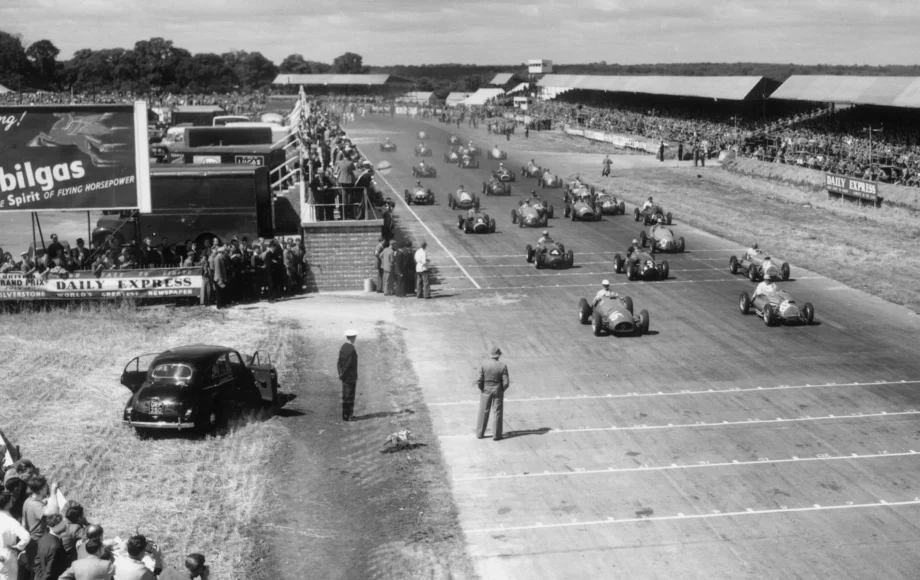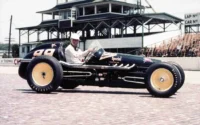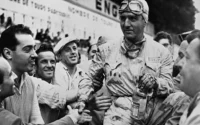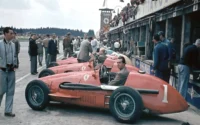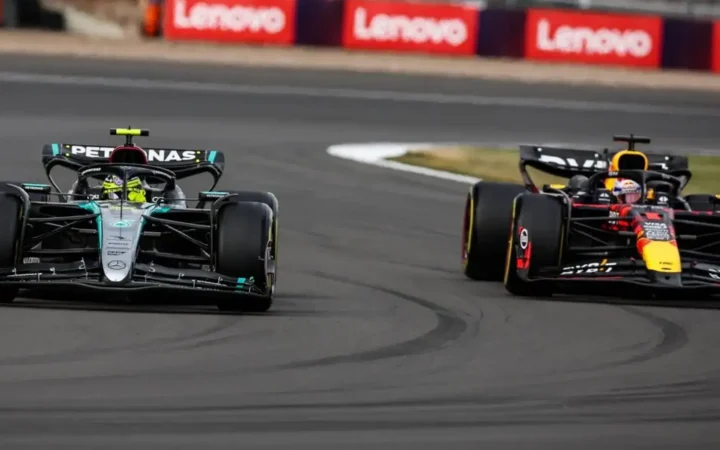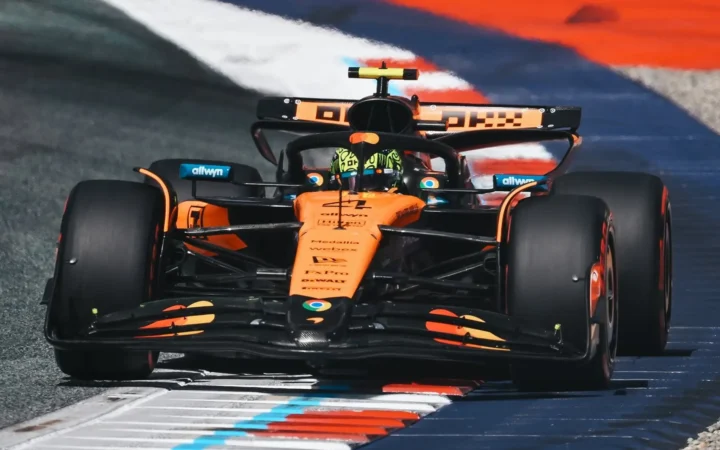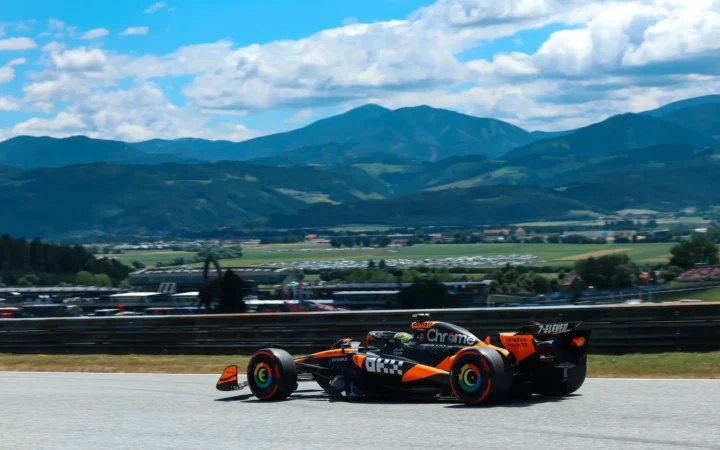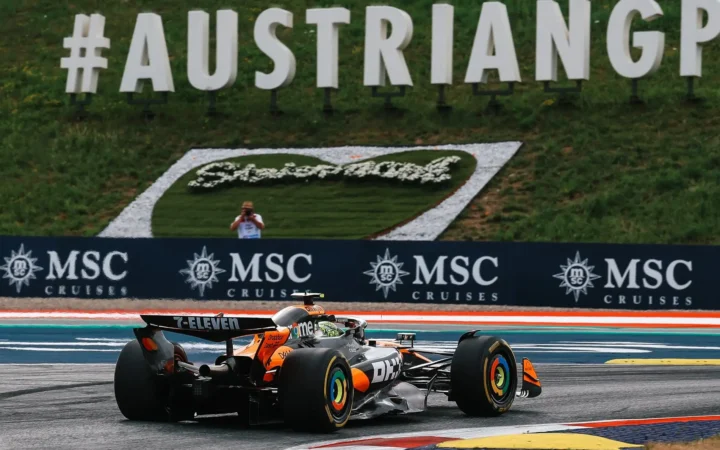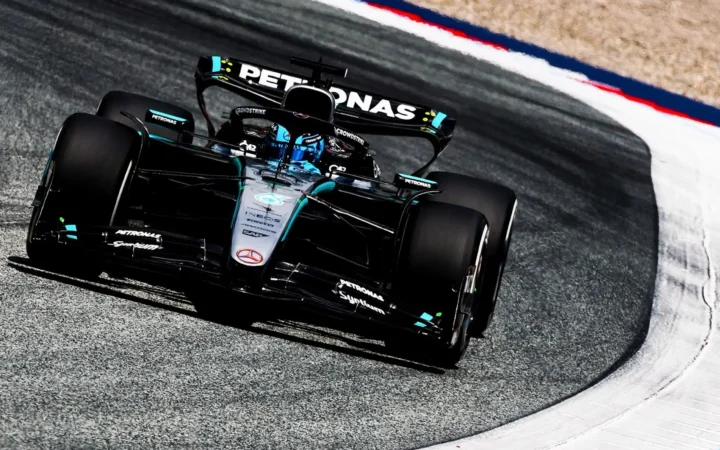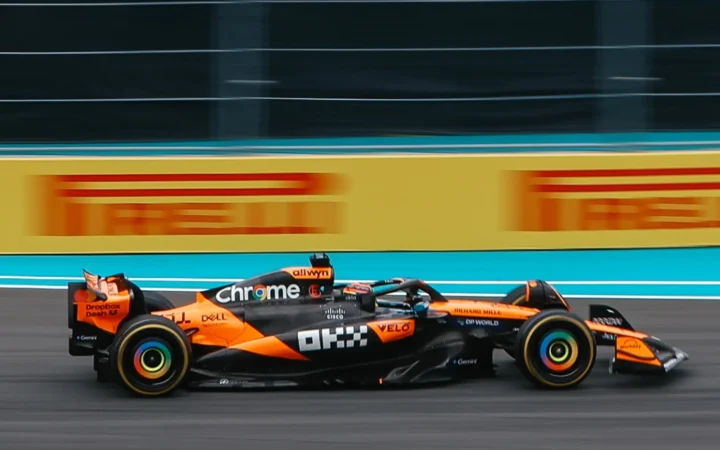The 1950 British Grand Prix certainly holds a special place for iconic moments in motorsport history. Held at the Silverstone Circuit in England, this race was the dawn of the F1 World Championship as we know it today.
Officially known as “The Royal Automobile Club Grand Prix d’Europe Incorporating The British Grand Prix,” this race marked several significant milestones. Beyond the first race of the F1 World Championship, it was the fifth time the British Grand Prix had been held and it was the third Grand Prix at Silverstone since motor racing resumed after World War II.
1950 British Grand Prix
The race lasted 70 laps, with Nino Farina leading the grid for Alfa Romeo. Starting from pole position, Farina dominated the race, finishing in 2 hours, 13 minutes, and 23.6 seconds. To put that into perspective, his average speed was a staggering 146.378 km/h.
Alfa Romeo’s supremacy didn’t end with Farina. Teammate Luigi Fagioli secured second, while the Alfa Romeo of Reg Parnell took third place. This gave the team a clean sweep for podium finishes on F1’s first official race.
1950 Formula One season
Silverstone was only one of seven to be an official championship race that season. Before the British Grand Prix, the non-championship races had set the tone for the season with Juan Manuel Fangio, another titan of the sport, claiming victories at both the Pau Grand Prix and the San Remo Grand Prix. Reg Parnell had his moment of glory with a win at the Richmond Trophy, while Georges Grignard triumphed at the Paris Grand Prix.
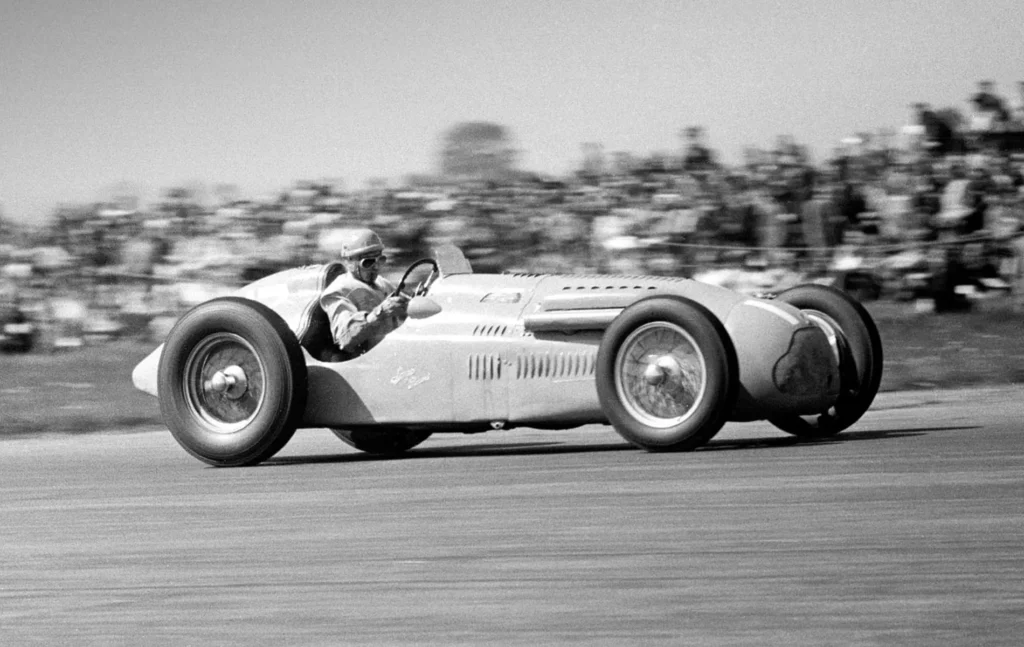
In the championship, points were distributed to the top five racers in every race: 8 points for the winner, 6 for second place, 4 for third, 3 for fourth, and 2 for fifth. A single point was designated for the racer with the quickest lap in each race. When drivers shared a car, the points earned were evenly split, irrespective of the number of laps driven by each racer. For the World Championship standings, only the best four results from seven races were considered for each driver.
What happened in the 1950 British Grand Prix?
Race background
Formula 1’s DNA can be traced back to 1946, with the first race governed by similar rules at the 1946 Turin Grand Prix. This race saw Achille Varzi driving the Alfa Romeo 158 to victory. However, in 1949, the Fédération Internationale de l’Automobile (FIA) announced an official series for the 1950 season, just a year after Grand Prix motorcycle racing was established.
The British Grand Prix in 1950 was the fifth iteration of the race, with Silverstone having the honour of hosting it for the third time since its debut in 1948. This race was also known for being the official European Grand Prix for that year, a title introduced in 1923 and awarded for the 11th time in 1950. In the lead-up to this iconic Grand Prix, Europe hosted four non-championship races.
The 1950 British Grand Prix weekend also featured support races, including the International 500cc Race, with Stirling Moss driving a Cooper-JAP to victory. Fans also saw a demonstration run of the eagerly-awaited BRM P15, set to make its mark on the sport later that year. The event was also graced by royalty as King George VI, Queen Elizabeth, Princess Margaret, and the Earl & Countess Mountbatten of Burma attended.
Qualifying
During Friday’s qualifying, the Alfa Romeos of Fagioli, Fangio, and Parnell secured the front row, with Farina becoming the first driver to achieve the maiden pole position of the series with an impressive time of 1:50.8. Prince Bira, the quickest racer not in an Alfa Romeo, trailed by 1.8 seconds with the second row occupied by the two Talbot cars.
Race entries
For the first official F1 race, 24 racers lined up on the grid, piloting 22 distinct cars. Interestingly, the numbers 7 and 13 were missing from the lineup. Notably, Ferrari was absent from this British opener, with Enzo Ferrari choosing not to send any cars to the race, preferring to make their grand debut in the following Monaco round instead. This allowed Alfa Romeo to dominate the race.
Alfa’s main rivals on the track were the Maseratis, driven by the Scuderia Ambrosiana team members David Hampshire and David Murray. Enrico Platé also registered two Maseratis, piloted by Prince Bira of Siam and Baron Toulo de Graffenried. However, the duo couldn’t make it to the Thursday practice sessions. Felice Bonetto, another Maserati entrant, was notably absent on race day.
Talbot-Lago made its presence felt with two factory cars painted in the iconic French pale blue. Yves Giraud-Cabantous and Eugène Martin drove foe the team with independent Talbots raced by Louis Rosier, Philippe Etancelin, and the Belgian racer Johnny Claes, whose car sported a distinctive yellow colour. Rounding off the lineup were local vehicles: four E.R.A.s and two Altas, all draped in the classic British racing green.
Race
On May 13th at the vintage Silverstone airport, 21 drivers from nine nations gathered, on the grid. The lineup included four drivers from France, two from Italy, and one each from Belgium, Ireland, Monaco, Argentina, Thailand, and Switzerland. Meanwhile, the host nation, the UK, was proudly represented by nine drivers. The event was a massive draw, pulling in a crowd of 200,000.
From the off, Farina immediately claimed the lead, closely tailed by Fagioli and Fangio. Cabantous, however, faced an initial setback, dropping four positions. The frontrunners switched places in the initial laps, but an unfortunate broken oil pipe led to engine issues, forcing Fangio to retire. This allowed Farina to take the win, finishing a mere 2.5 seconds ahead of Fagioli, with Parnell securing third, even after a minor collision with a live hare. Giraud-Cabantous was the closest driver to the top three, trailing by two laps, as Bira had to drop out due to fuel complications. At the rear, Crossley and Murray locked in a duel until both retired. De Graffenried bid the race goodbye on lap 34, and Chiron followed suit ten laps before.
Throughout the race, Nino Farina led for 63 laps, Luigi Fagioli for six, and Juan Manuel Fangio took the lead for a brief lap.
Car number 10 saw Joe Fry in last for the initial 45 laps before Brian Shawe-Taylor took charge for the subsequent 19 laps, covering a distance of 297.536 km. In car number 9, Peter Walker took the lead for two laps, with Tony Rolt extending it for three more, amassing a total distance of 23.245 km.
Nino Farina also clocked the race’s fastest lap, completing it in 1:50.6 during the second lap.
1950 British Grand Prix Race Results
| Pos | No | Driver | Constructor | Laps | Time/Retired | Grid | Points |
|---|---|---|---|---|---|---|---|
| 1 | 2 | Nino Farina | Alfa Romeo | 70 | 2:13:23.6 | 1 | 9 |
| 2 | 3 | Luigi Fagioli | Alfa Romeo | 70 | + 2.6 | 2 | 6 |
| 3 | 4 | Reg Parnell | Alfa Romeo | 70 | + 52.0 | 4 | 4 |
| 4 | 14 | Yves Giraud-Cabantous | Talbot-Lago-Talbot | 68 | + 2 Laps | 6 | 3 |
| 5 | 15 | Louis Rosier | Talbot-Lago-Talbot | 68 | + 2 Laps | 9 | 2 |
| 6 | 12 | Bob Gerard | ERA | 67 | + 3 Laps | 13 | |
| 7 | 11 | Cuth Harrison | ERA | 67 | + 3 Laps | 15 | |
| 8 | 16 | Philippe Étancelin | Talbot-Lago-Talbot | 65 | + 5 Laps | 14 | |
| 9 | 6 | David Hampshire | Maserati | 64 | + 6 Laps | 16 | |
| 10 | 10 | Joe Fry Brian Shawe-Taylor | Maserati | 64 | + 6 Laps | 20 | |
| 11 | 18 | Johnny Claes | Talbot-Lago-Talbot | 64 | + 6 Laps | 21 | |
| Ret | 1 | Juan Manuel Fangio | Alfa Romeo | 62 | Oil pipe | 3 | |
| NC | 23 | Joe Kelly | Alta | 57 | Not Classified | 19 | |
| Ret | 21 | Prince Bira | Maserati | 49 | Out of fuel | 5 | |
| Ret | 5 | David Murray | Maserati | 44 | Engine | 18 | |
| Ret | 24 | Geoffrey Crossley | Alta | 43 | Transmission | 17 | |
| Ret | 20 | Toulo de Graffenried | Maserati | 36 | Engine | 8 | |
| Ret | 19 | Louis Chiron | Maserati | 24 | Clutch | 11 | |
| Ret | 17 | Eugène Martin | Talbot-Lago-Talbot | 8 | Oil pressure | 7 | |
| Ret | 9 | Peter Walker Tony Rolt | ERA | 5 | Gearbox | 10 | |
| Ret | 8 | Leslie Johnson | ERA | 2 | Compressor | 12 |
1950 Post-Race F1 Drivers’ Championship Standings
| Pos | Driver | Points |
|---|---|---|
| 1 | Nino Farina | 9 |
| 2 | Luigi Fagioli | 6 |
| 3 | Reg Parnell | 4 |
| 4 | Yves Giraud-Cabantous | 3 |
| 5 | Louis Rosier | 2 |
Seen in:

